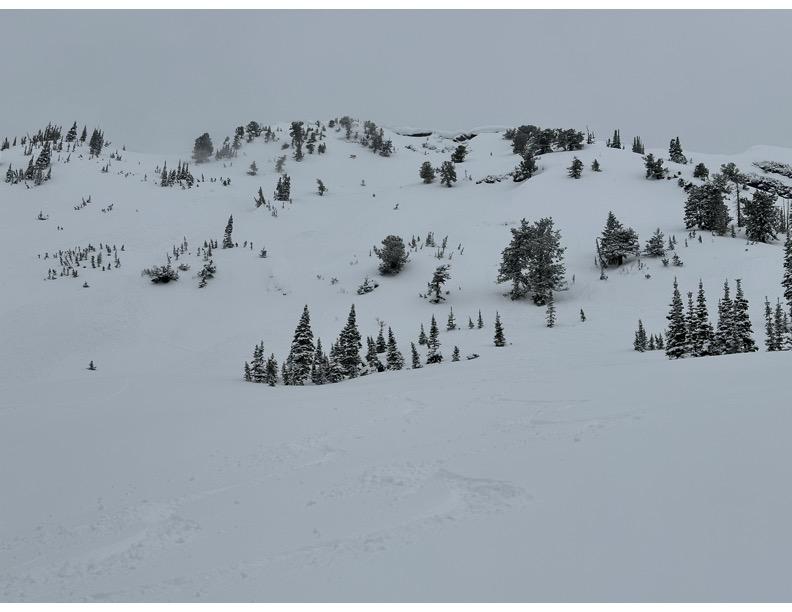Observation Date
Saturday, March 30, 2024
Avalanche Date
Saturday, March 30, 2024
Region
Salt Lake » Big Cottonwood Canyon » Mineral Fork
Location Name or Route
MIneral Fork - GB No
Elevation
9,400'
Aspect
Northeast
Trigger
Unknown
Avalanche Type
Soft Slab
Avalanche Problem
New Snow
Depth
10"
Width
150'
Vertical
250'
Caught
1
Carried
1
Comments
In Mineral Fork. At roughly 9100 feet we reached the portion of the skin track where we could either go right and ski Moonlight or left and ski GB No aprons or continue further up to the ridge. We went left to GB No. Before crossing to GB No, we again discussed today's avy forecast, the steeps above us, the cornices, slope angle, wind conditions (which were nil), the North - Northeast aspect of the objective, and the fact that we had seen a party of 3 that was just about to attain the ridge could be above us (we did not know which way they would head on the ridge).
As we approached the skier’s right side of GB No we tucked in at the top of the apron (approx. 35 degrees and just before it got much steeper above us) behind 4 very large pine trees as a way to manage the overhead risk knowing the new snow depth was approx. 6 - 8”. We saw no signs of instability or wind deposits on the way up or at our location; temps were much cooler at 9100 feet and the new snow at that elevation was not dense. As we were just about done transitioning (about 5-6 min after we stopped) snow began to slide past us about 8-10” deep. Skier 1 - who was maybe 10 feet further skier's left and closer to the tree above him - never lost his feet. Skier 2 slid 20-30 feet staying on top the entire time. As our packs, skins, etc were off to transition, they were carried another 20-30 feet below skier 2 but stayed on top as well.
Due to the flat light and obstacles in our view we could not see well enough to determine the width of the slide or precisely the top of the crown. As best we could tell, it looked like the avalanche started 150+ feet looker’s left of our position and quite a bit further up the slope (close to the ridge). As we gained perspective from much further below, it appeared that the slide split around a pronounced knob. We were on the far skier’s left edge of the debris. Far more of the debris was well to the skier’s right of us. It was hard to determine the length of the slide given our inability to see the true crown, but it clearly slid at least ~250 feet down. We estimate that the slide was 8-10" deep, and it seemed that it was the new storm snow sliding on a firm layer.
We also have no clear picture of what triggered the slide (i.e., remote trigger of a wind slab by skiers on the ridge or by ourselves while we transitioned, a piece of cornice falling onto a wind deposit just below the ridge, etc.).


Coordinates



